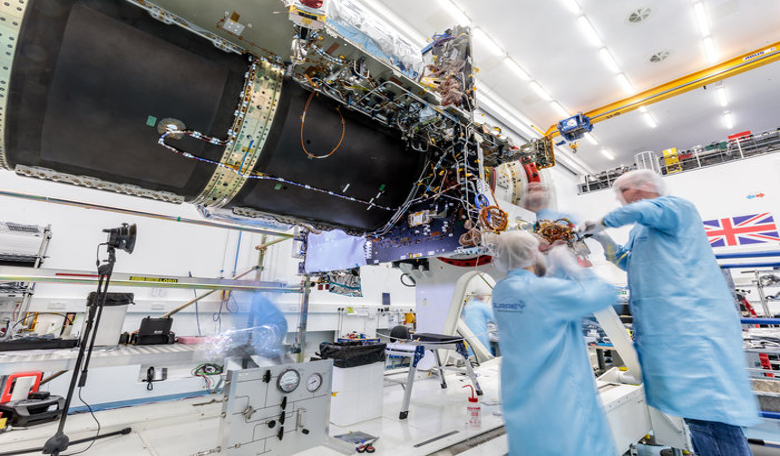Up until now, telecommunications satellites were largely fixed, one off, custom machines designed for a specific use or market. Not any more.
Commissioned by Eutelsat and built in Britain by Airbus and Surrey Satellite Technology (SSTL) in Portsmouth and Guildford, EUTELSAT QUANTUM is the first satellite capable of being completely reprogrammed after launch.
Nicknamed the ‘chameleon’ satellite because of its software-driven approach, the satellite can perform all manner of changes while it is in orbit, such as adjusting the satellite’s coverage, frequency, power, and even orbital position.
"Communications satellites like EUTELSAT QUANTUM that can be reprogrammed to adapt coverage and connectivity in orbit could until recently be considered the stuff of science fiction," said Dr Graham Turnock, CEO of the UK Space Agency. "
Weighing in at just over 1 tonne, which is an order of magnitude bigger than any other satellite they have built in the past, the design marks a shift from the traditional custom-designed, one-off payloads and is a first for all parties involved.
The development of the core technologies integrated into EUTELSAT QUANTUM is supported by the UK Space Agency and the European Space Agency (ESA) within the framework of a Public-Private Partnership.
Yohann Leroy, Eutelsat Deputy CEO and Chief Technical Officer, said: “Eutelsat Quantum is a world-first and reflects the culmination of many years of research and evaluation driven by Eutelsat, and supported by major partners such as the ESA, the UK Space Agency, and Airbus. It will bring unprecedented agility and flexibility to our customers in the government, mobility and data markets: innovation will not only come from the ability to adjust coverages in real time in order to allocate resources between beams and regions but also from the fact that customers will be able to take command and optimise capacity use autonomously.”
The satellite will soon travel from SSTL Guildford to join the rest of the mission’s technologies in Airbus France, where it will be paired-up with its ground-breaking payload.











